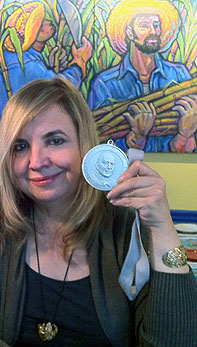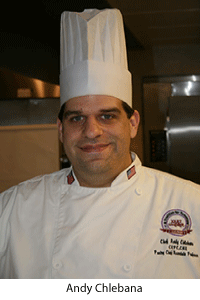
Lesson Plan: Calculate Cost of Idaho Potatoes per Serving Online
Wednesday, 10 September 2014 16:40The Idaho Potato Commission’s Cost & Size page ensures less waste, more cost-effective orders.
For students in cost-control classes, the Idaho Potato Commission (IPC) has added another essential foodservice tool to its online resources. The IPC cost and size calculators help take the guesswork out of purchasing Idaho® Potatoes. From carton to plate, users can rely on these tools to give them real-time numbers for keeping food costs in line.
To access the Idaho Potato Commission Cost & Size page, click on the toolbar link at https://idahopotato.com/

 And with power comes responsibility, says this Hoboken chef, restaurateur, author, businesswoman and Latin cuisines historian.
And with power comes responsibility, says this Hoboken chef, restaurateur, author, businesswoman and Latin cuisines historian. Pastry-chef instructors from Joliet Junior College, SAIT Polytechnic and The Pennsylvania School of Culinary Arts hope to become the 12th, 13th and 14th CMPCs in the United States.
Pastry-chef instructors from Joliet Junior College, SAIT Polytechnic and The Pennsylvania School of Culinary Arts hope to become the 12th, 13th and 14th CMPCs in the United States. “How are you today?”, though arguably better than nothing, is so overused and insincere that it fails to distinguish the service culture of your retail foodservice outlets. To employ an effective interaction strategy (and increase sales), understand that customers respond on conscious and unconscious levels to every aspect of their engagement with your instructors and student employees.
“How are you today?”, though arguably better than nothing, is so overused and insincere that it fails to distinguish the service culture of your retail foodservice outlets. To employ an effective interaction strategy (and increase sales), understand that customers respond on conscious and unconscious levels to every aspect of their engagement with your instructors and student employees. In the candy and chips aisles, Sriracha is undoubtedly the pepper of the year, as evidenced at the Sweets & Snacks Expo in May. And “free from” claims reign supreme in this industry. A foremost food-trends expert surveys the landscape of cross-over flavor demands between the snack shop and restaurant.
In the candy and chips aisles, Sriracha is undoubtedly the pepper of the year, as evidenced at the Sweets & Snacks Expo in May. And “free from” claims reign supreme in this industry. A foremost food-trends expert surveys the landscape of cross-over flavor demands between the snack shop and restaurant.